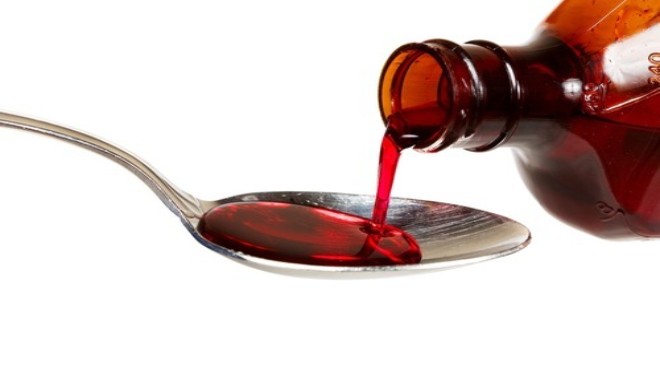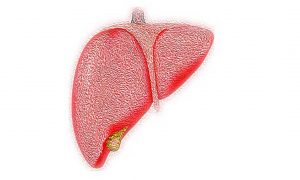Winters – The season for almost every person going through bouts of dry cough is knocking at our doors and so is the insane scramble at chemist shops for those over-the-counter (OTC) cough syrups. But did you know that these syrups are causing you more harm than good?
Many of these OTC cough syrups contain codeine — an addiction-causing opioid. One 100ml bottle of codeine-containing cough syrup (CCS) has the same effect as a 30 mg tablet of morphine. In fact, very few of us know that the drug is an addictive narcotic as it comes in the category of heroin. Technically, codeine is a pro-drug derived from opium and converts into morphine in the liver.
And it doesn’t take much to get addicted. Even low doses can give a high — a kick. No wonder many people get hooked on them, most of them unknowingly — as there’s no warning on the bottle. Addiction differs in degrees. The anxiety level and the feeling of restlessness without it in some are too pronounced.
One’s metabolism also plays a great part in making one vulnerable. Around 40% of North Africans have the gene variant associated with “ultra-fast metabolizers”, thus making them more vulnerable to an overdose of CCS; in Europe, it is only 3%.
Actually, codeine suppresses or dulls those signals that trigger the cough reflex through a direct effect on the cough centre in the brain stem. However, codeine doesn’t reduce cough frequency, intensity or duration. We think the syrup is allaying our unease, but it is just a fraction of relief that we get from it.
There are over 100 CCSs in the market. But Phensedyl or Corex brands capture most of it. There are many addicts who mix it with soda drinks for more palatability or gulp down the CCS, followed by a hot cup of tea or coffee for the effect to speed up. It’s a cheap route to addiction — a 100 ml bottle of Phensedyl or Corex costs around Rs 75.
What do CCSs do?
Codeine-containing cough syrup (CCS) causes dizziness, slurred speech, auditory hallucinations, hot or cold flashes, increased heart rate, distorted visual perceptions, hyperexcitability and high BP. And that’s only the tip of the iceberg.
Growing ban calls
Recently, 66 kids in Gambia died after consuming cough syrups contaminated with diethylene glycol or ethylene glycol. These syrups – which didn’t contain codeine — were manufactured by a Haryana-based firm.
This jolted the parliamentarians, who voiced renewed concern over CCSs and they being used as intoxicants and narcotics in August this year. The MS Bhatia-led committee, set up by the health ministry, also recommended the ban on certain codeine-based combinations. The government authorities want to clamp a ban, but the drug manufacturers are opposing it tooth and nail.
The Indian Drug Manufacturer Association (IDMA) is trying all ways to ensure that the calls for a ban are quelled. IDMA has said the ban could spell a loss of Rs 300 crore to the government exchequer.
It seems like a repeat of 2016. On March 10 that year, CCSs were among the irrational 350-odd fixed dose combination drugs that the government had banned after having appointed an expert committee headed by Dr Kokate. These cough syrups were banned under Section 26 A of the Drugs and Cosmetics Act. The ban was upheld by the Drugs Technical Advisory Board in July 2018. But the strong pharma lobby challenged the ban, stating that no adverse effects of CCS have been reported in India and the Delhi High Court put an interim stay on the government’s ban.
Crackdown and cross-border smuggling
From Gujarat to Tripura and from Jammu and Kashmir to Tamil Nadu, the menace of CCS abuse has been growing over the years despite a crackdown on it from time to time. What’s more is that there is rampant cross-border smuggling to Bangladesh and Nepal.
As per RTI data from Narcotics Control Bureau (NCB), the total seizure of smuggled cough syrup containing codeine during years 2014 and 2015 was 2,635,848 litres. Some 83,000 bottles of CCS were seized in India in the six months through March in 2015.
In August 2015, the customs authorities in Tripura’s Agartala destroyed more than 1,13,000 bottles of Phensedyl bound for Bangladesh. The very next month, the Border Security Force (BSF) in a joint operation with customs officials seized 21,400 Phensedyl bottles from four trucks.
In July 2015, state-run laboratories in West Bengal found twice the amount of codeine (21.37 mg/5ml dosage instead of 10 mg/5ml) in a batch of Phensedyl bottles.
In March 2016, Haryana’s food and drugs administration department booked two drug wholesalers for smuggling two lakh bottles of a popular cough syrup sold by a multinational pharmaceutical giant.
At least 10,000 CCS bottles were seized in Sirmaur district, Himachal Pradesh, by the State Narcotic Crime Control Cell (SNCCC) and the Drug Control Administration (DCA) in April 2017.
The next year, in January, the Crime Investigation Department of Telengana registered a case against Abbott Health Care Pvt Ltd in an alleged case of smuggling Phensedyl bottles. In July, the NCB Ahmedabad and FDCA Gujarat seized more than 42,000 bottles of safe codeine phosphate cough syrup, worth Rs 47 lakh.
In January 2020, 5,920 bottles of Eskuf cough syrup were seized by the police in Bolangir, Odisha. The bottles were recovered from two vehicles. In May, the CID conducted raids and recovered around 9,500 bottles of codeine-containing cough syrups near Guwahati. This was followed by the NCB carrying out raids and searches across India and seizing 60 kg of opium, and 840 bottles of CCSs.
The BSF seized over 33,536 bottles of Phensedyl from smugglers along the south Bengal front during lockdown period (March 25 to May 24, 2020).
In September this year, over one lakh bottles of CCSs worth Rs 1.76 crore were seized by Directorate of Revenue Intelligence officials. The DRI claimed that they had busted a major racket engaged in smuggling of cough syrups into the north east India from Uttar Pradesh, Jammu and Madhya Pradesh.
In a report, the Press Trust of India quoted a senior home ministry official as saying that Phensedyl smuggling is a “major irritant” in India-Bangladesh ties and a “collaborative approach” involving the Centre, state governments and law enforcement agencies is required to end this menace.
A report in 2020, prepared by BSF’s south Bengal frontier, revealed that “a well-oiled network of people, top officials from pharma firms, clearing and forwarding agents in states, drug stockists and influential people are engaged in this illegal trade where the demand for production is kept high in contrast to actual consumption.”
Despite being banned in the 1980s in Bangladesh, about 7.50 lakh bottles were seized in that country in 2014. And the number has increased by leaps and bounds.
It is not without reason that the International Narcotics Control Board (INCB) dubbed the abuse of medicines containing narcotics and their smuggling from India among the “greatest drug-related challenges” facing South Asia.
Too little, too late
“The combination of an opioid and a sympathomimetic agent such as chlorpheniramine in the CCS may cause a special, distinct (euphoria) effect. This effect, along with the low price, easy availability and pure reprepartion of CCS may be responsible for the rapidly rising popularity of the CCS as drugs of abuse in India,” underlined a 1997 study conducted by Post Graduate Institute of Medical Education and Research, Chandigarh.
After almost two decades of the PGI report, in 2016, the government announced a ban on CCSs. Pressure was mounted on firms to monitor how they sell their drugs to tackle addiction and smuggling. India’s Cipla stopped making the CCSs in 2017. But US-based Pfizer and Abbott Laboratories — the leading players in more than $103 million CCS sector who forced a court stay on the ban — have done little to check the abuse, except paying lip-service to it, till now.
The ministry of finance has been pressuring the companies to enable tracking of each batch produced. Pharmacists dispensing these syrups — who know its potential for addiction — have been asked to show sale receipts of all these syrups bought on prescription. But what about the non-prescription ones?
Remedial measures
“Every good drug has its risks as well. But a not-so-good drug with risks? It’s pretty hard to justify,” Ross Tsuyuki, editor of the Canadian Pharmacists Journal and a professor of medicine at the University of Alberta, once said this.
If the inefficacy of a drug is proved, shouldn’t it be thrown out of the shelves? But it hasn’t been. So, till they are there, we have to find out a remedy.
First and foremost, such syrups shouldn’t be sold without doctor’s prescription. The problem is that the government has no clue how many are taking them as it is available without prescription. Addictions and lethal outcomes happen because of this. However, how many are linked to non-prescription is difficult to track. Asking chemists to retain receipts of sale of codeine phosphate cough syrups could be a good step.
Regulatory changes are needed too. Manufacturers should be bound by the ‘One batch One buyer’ rule. Printing labels that specify where the drug would be sold is paramount.
Federal drugs officials and regulators have to implement strict laws to control the abuse and it is imperative that enforcement agencies leave no room for any lapse.
More teeth has to be given to the regulatory bodies while increasing their strength. Sometime back, a BSF report said that India has just 1,500 drug inspectors responsible for more than 10,000 factories supplying medicines. There are only140 such inspectors in West Bengal for 50,000 pharmacies. Now, how can you expect a foolproof checking mechanism with such a skeletal staff?
All said, it’s only a blanket ban that can root out the problem. If Sweden, Latvia, Sri Lanka and Maldives can do it, why can’t India?





































